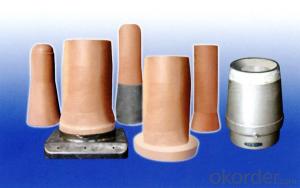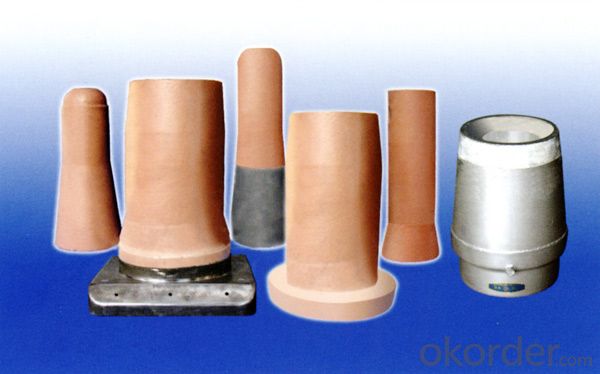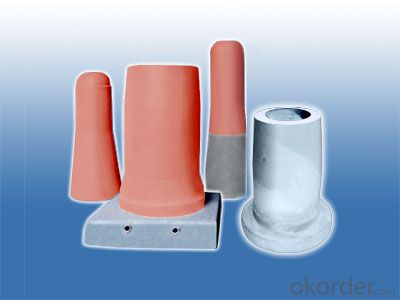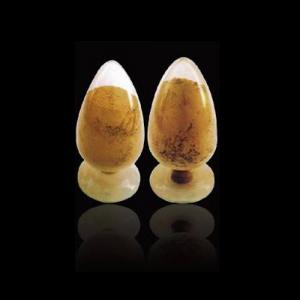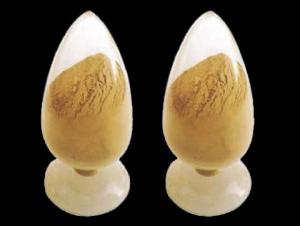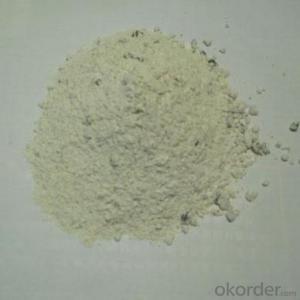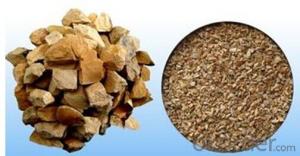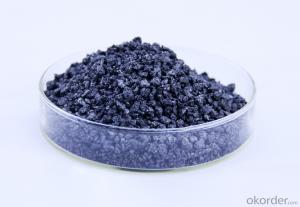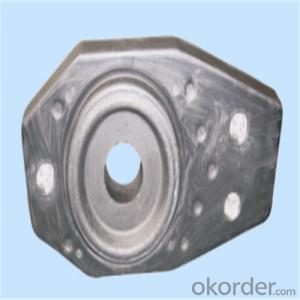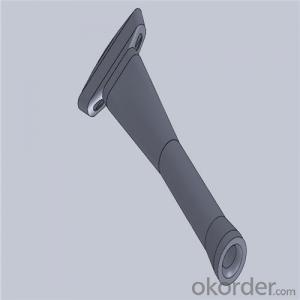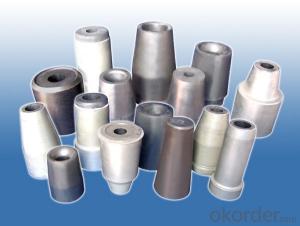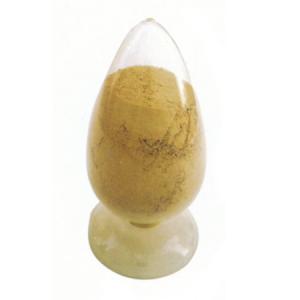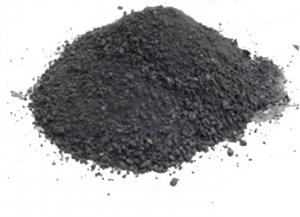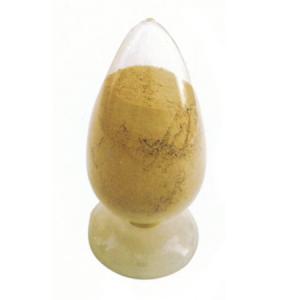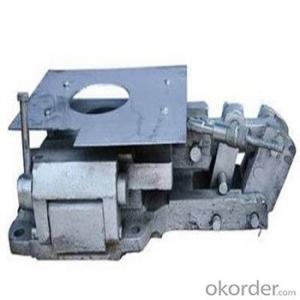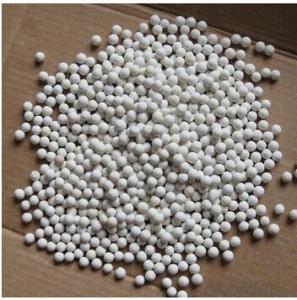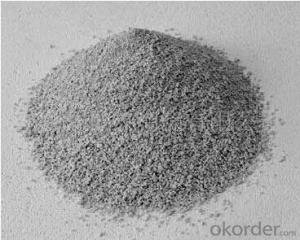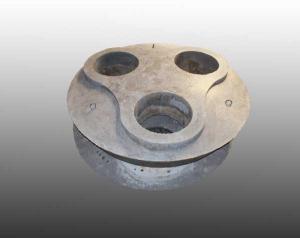Monolithic Refractories for Iron and Steel Industry - Refractory Tundish Upper Nozzle and Collect Nozzle
- Loading Port:
- Shanghai
- Payment Terms:
- TT OR LC
- Min Order Qty:
- 10 set
- Supply Capability:
- 50000 set/month
OKorder Service Pledge
OKorder Financial Service
You Might Also Like
Description:
Steelmaking tundish upper nozzle is an kind of quickchange nozzle,used together with tundish collect nozzle which produced by topcahse, with high purity zr 95% for steel continuous casting process
tundish nozzle is one kind of refractory alumina-zirconia-cartbon brick which are used for control the molten
steel in steel casting .we called is composite zirconia tundish nozzle
| Al2O3 % | Fe2O3 % | SiO2 % | TiO2 % | ZrO2 % | CaO % | MgO % | LOI % | Density g/cm³ | Proosity | fraclure strength Mpa | Application | |
| Body | 53.28 | 0.91 | 14.48 | 1.41 | 30.59 | 2.42 | 14.3 | 8.4 | general | |||
| Bowl struclure | 86.61 | 0.43 | 0.77 | 0.33 | 11.11 | 2.85 | 17.7 | 6.73 | general | |||
| Bowl struclure | 71.43 | 0.91 | 10.65 | 10.95 | 2.78 | 16.3 | 14.5 | Bowl struclure with serious corrosion | ||||
| Body | 63.15 | 1.51 | 6.83 | 0.87 | 3.25 | 22.13 | 2.6 | 16.24 | 8.67 | Inner part with serious corrosion | ||
| Liner | 64.1 | 0.81 | 4.06 | 4.94 | 0.12 | 0.32 | 22.5 | 2.4 | 16.7 | 7.2 | General anti-blocking | |
| Liner | 0.55 | 4.65 | 52 | 19.2 | 0.3 | 22.3 | 2.45 | 16.3 | 8.6 | High standard anti-blocking | ||
| Liner | 52.9 | 13.9 | 0.07 | 21 | 12.1 | 2.51 | 18.71 | 6 | Low carbon | |||
| Bowl struclure | 15.1 | 8.95 | 0.29 | 1.56 | 56.8 | 17.3 | 2.59 | 16.7 | 7.8 | Slag Containing |
Manufacturing and QC
1.Raw materials blending
Independent raw materials blending center to assurestrict control of materials quality.
2.Shaping
Isostatic pressing technoloty,with as 1000 tons of pressure to assure the homogenous bulk density of each product.
3.Machining
To assure the uniform shape,dimension and dimension tolerance of each product.
4.X-ray defect inspection
To assure all products supplied to our customers without any defect and to prevent the un-countable feconomic loss for our customers.
5.Physical and chemistry analysis
To assure all products meet the physical and chemistry characteristics.
6.Packaging
The world-class for packaging to assure the safety transportation.
- Q: How does the composition of monolithic refractories impact their performance?
- The composition of monolithic refractories greatly impacts their performance. The choice of raw materials, such as aggregates, binders, and additives, determines the refractory's properties, such as strength, thermal conductivity, chemical resistance, and thermal expansion. The correct composition ensures that the refractory can withstand high temperatures, resist corrosion, and maintain its structural integrity even under severe conditions. A well-designed composition also improves the refractory's workability and ease of installation, allowing for efficient and effective lining applications.
- Q: How do monolithic refractories improve the efficiency of reheating furnaces in steel plants?
- Monolithic refractories improve the efficiency of reheating furnaces in steel plants by providing a superior lining material that offers high thermal conductivity, excellent heat resistance, and resistance to thermal shock. These refractories help to minimize heat loss and improve heat transfer, resulting in reduced energy consumption and increased furnace productivity. Additionally, the use of monolithic refractories eliminates the need for time-consuming bricklaying, allowing for quicker furnace start-up times and reduced maintenance downtime.
- Q: How do monolithic refractories contribute to reducing emissions in iron and steel processes?
- Monolithic refractories play a crucial role in reducing emissions in iron and steel processes by providing a more efficient and sustainable lining solution compared to traditional brick refractories. Firstly, monolithic refractories are characterized by their homogeneous structure, which allows for easier installation and repair. This feature reduces the downtime required for maintenance, resulting in increased productivity and ultimately lower emissions. In contrast, brick refractories require more extensive labor and time-consuming procedures for installation and repair, leading to longer shutdown periods and increased emissions. Moreover, monolithic refractories exhibit superior thermal insulation properties. By minimizing heat loss from the furnace or kiln, they enable higher energy efficiency and reduce the fuel consumption required for achieving the desired temperature. This reduction in fuel usage directly translates to lower emissions of greenhouse gases, such as carbon dioxide, contributing to the overall environmental sustainability of iron and steel processes. Additionally, monolithic refractories offer excellent resistance to thermal and chemical wear, enhancing the durability and lifespan of the lining. This durability reduces the frequency of refractory replacement, resulting in reduced waste generation and resource consumption. By extending the service life of the lining, monolithic refractories contribute to reducing the environmental impact associated with the production and disposal of refractory materials. Furthermore, monolithic refractories can be formulated with specialized compositions and additives to enhance their resistance to corrosion and erosion, common challenges in iron and steel processes. By minimizing the wear and tear on the refractory lining, they help maintain the integrity of the furnace or kiln, preventing the leakage of harmful gases and pollutants that would otherwise contribute to emissions. In summary, monolithic refractories contribute to reducing emissions in iron and steel processes through their ease of installation and repair, superior thermal insulation properties, increased durability, and resistance to corrosion and erosion. By optimizing energy efficiency, minimizing downtime, and reducing waste generation, monolithic refractories offer a sustainable solution for the industry, aligning with the global efforts to combat climate change and promote environmental stewardship.
- Q: Can monolithic refractories be used for the lining of continuous casting tundishes and molds?
- Yes, monolithic refractories can be used for the lining of continuous casting tundishes and molds. Monolithic refractories are versatile and can be shaped or molded to fit the specific requirements of the tundish and mold lining. They offer excellent thermal shock resistance and high-temperature stability, making them suitable for the harsh conditions of continuous casting. Additionally, monolithic refractories have low porosity, which helps prevent the penetration of molten metal and promotes longer service life for the tundish and mold lining.
- Q: How do monolithic refractories improve the thermal efficiency of iron and steel furnaces?
- Monolithic refractories improve the thermal efficiency of iron and steel furnaces by providing superior insulation and heat containment properties. These refractories are designed to withstand extreme temperatures and resist thermal shock, ensuring minimal heat loss from the furnace. Additionally, monolithic refractories have low thermal conductivity, allowing for better heat distribution and retention within the furnace. This enhanced thermal efficiency leads to reduced energy consumption and higher productivity in the iron and steel manufacturing process.
- Q: How do monolithic refractories improve the efficiency of ladle and tundish preheaters?
- Monolithic refractories improve the efficiency of ladle and tundish preheaters by providing excellent insulation, high thermal conductivity, and resistance to thermal shock. These properties allow for better heat retention, reduced heat loss, and quicker and more uniform heating of the ladle and tundish, ultimately improving the overall efficiency of the preheating process.
- Q: How do monolithic refractories contribute to the reduction of downtime in iron and steel plants?
- Monolithic refractories play a crucial role in reducing downtime in iron and steel plants due to their unique properties and applications. These refractories are composed of a single, uniform material, making them highly versatile and easier to install compared to traditional brick refractories. Firstly, monolithic refractories offer excellent thermal insulation, which helps to prevent heat loss and maintain high temperatures in various areas of the plant. This insulation capability reduces the need for frequent repairs and replacements, as it minimizes thermal stress and prolongs the lifespan of equipment and furnaces. This, in turn, results in less downtime required for maintenance and repair work. Secondly, monolithic refractories exhibit superior resistance to thermal shock. The extreme temperatures experienced in iron and steel plants can cause rapid and significant temperature changes, leading to the cracking and failure of refractory linings. However, monolithic refractories have better thermal shock resistance, enabling them to withstand sudden temperature fluctuations without sustaining damage. This property enhances their durability and contributes to the reduction of downtime. Moreover, monolithic refractories offer enhanced mechanical strength and chemical resistance, making them suitable for the harsh operating conditions in iron and steel plants. These refractories can withstand the erosive effects of molten metal, slag, and other corrosive materials, ensuring the longevity of equipment and reducing the frequency of maintenance interventions. Additionally, the installation process of monolithic refractories is faster and more efficient compared to brick refractories. They can be easily applied using various techniques, such as shotcreting or gunning, allowing for quick repairs or renovations during planned shutdowns or even emergency situations. The reduced installation time results in shorter downtime periods, enabling the plant to resume operations promptly. In conclusion, monolithic refractories significantly contribute to the reduction of downtime in iron and steel plants through their excellent thermal insulation, resistance to thermal shock, mechanical strength, and chemical resistance. Their ease of installation and quick repair capabilities further enhance their role in minimizing downtime and ensuring uninterrupted production in these critical industries.
- Q: What are the main factors affecting the abrasion resistance of monolithic refractories?
- The main factors affecting the abrasion resistance of monolithic refractories can be categorized into three key aspects: material composition, microstructure, and service conditions. Firstly, material composition plays a crucial role in determining the abrasion resistance of monolithic refractories. The choice of raw materials, such as aggregates and binders, directly influences the overall hardness, strength, and wear resistance of the refractory. For instance, high-alumina refractories, which contain a high percentage of alumina as the main component, tend to exhibit excellent abrasion resistance due to the hardness and toughness of alumina. Conversely, refractories with a high proportion of softer materials like clay or magnesia may have lower abrasion resistance. Secondly, the microstructure of monolithic refractories greatly affects their ability to withstand abrasion. The distribution and orientation of aggregates, as well as the bond strength between the particles and the matrix, play significant roles in determining the resistance to wear. A well-distributed and interconnected network of aggregates can enhance the refractory's strength and resistance to abrasion. Additionally, a dense and well-sintered matrix can inhibit the penetration of abrasive particles, thereby reducing wear. Lastly, the service conditions in which the monolithic refractories are exposed to are crucial factors in determining their abrasion resistance. Factors such as temperature, atmosphere, and mechanical stress can significantly impact the wear behavior of refractories. High temperatures can cause thermal expansion and contraction, leading to cracks and spalling, which can accelerate abrasion. The presence of corrosive gases or chemicals can also deteriorate the refractory's microstructure, reducing its resistance to wear. Furthermore, mechanical stress from impact or friction can cause localized wear and damage the refractory. In conclusion, the main factors affecting the abrasion resistance of monolithic refractories include material composition, microstructure, and service conditions. By carefully selecting the appropriate raw materials, optimizing the microstructure, and considering the specific service conditions, it is possible to enhance the abrasion resistance of monolithic refractories and improve their overall performance in high-wear applications.
- Q: What are the recommended installation techniques for monolithic refractories?
- The installation techniques for monolithic refractories depend on the specific type and application of the refractory material. However, there are general guidelines that can be followed for most installations of monolithic refractories. 1. Surface Preparation: Prior to installing monolithic refractories, it is essential to ensure that the surface is clean, dry, and free from loose particles or contaminants. This can be accomplished by removing any existing refractory materials, thoroughly cleaning the surface, and allowing it to completely dry. 2. Mixing: Monolithic refractories are typically supplied in either a dry or wet form, depending on the specific material. If the refractory is in a dry form, it must be mixed with water or a suitable liquid binder to achieve a workable consistency. It is important to follow the manufacturer's guidelines for the correct mixing ratio and duration to ensure proper bonding and setting of the refractory material. 3. Application: The technique for applying monolithic refractories can vary depending on the specific material and desired installation method. Some common techniques include troweling, gunning, ramming, and casting. - Troweling: This involves manually applying the refractory material with a trowel, typically used for thin linings or patching small areas. - Gunning: Gunning is a method of applying refractory material using a gunning machine or handheld gun. It is suitable for large areas or areas that are difficult to access. The refractory material is mixed with water or a liquid binder and sprayed onto the surface at a high velocity. - Ramming: Ramming involves compacting the refractory material into place using a ramming tool or pneumatic hammer. It is commonly used for forming furnace linings or repairing damaged areas. - Casting: Casting refers to pouring the refractory material into a mold to create a desired shape or lining. It is often used for complex shapes or large-sized components. 4. Curing and Drying: Once the refractory material is applied, it must be properly cured and dried to achieve its maximum strength and thermal properties. The curing and drying process may vary depending on the specific material, but typically involves controlled heating at a gradual rate to eliminate any remaining moisture and allow the refractory to set and harden properly. It is important to note that these are general guidelines, and it is always recommended to consult the manufacturer's instructions and specifications for the specific monolithic refractory material being used. Following the recommended installation techniques will help ensure the proper performance and longevity of the refractory lining.
- Q: What are the specific requirements of monolithic refractories for continuous casting applications?
- The specific requirements of monolithic refractories for continuous casting applications include high thermal shock resistance, excellent erosion resistance, good thermal conductivity, low shrinkage, and high refractoriness. These refractories must also have good flowability and workability to ensure easy installation and maintenance. Additionally, they should have a high degree of chemical stability to withstand the harsh conditions of molten metal and slag in continuous casting processes.
Send your message to us
Monolithic Refractories for Iron and Steel Industry - Refractory Tundish Upper Nozzle and Collect Nozzle
- Loading Port:
- Shanghai
- Payment Terms:
- TT OR LC
- Min Order Qty:
- 10 set
- Supply Capability:
- 50000 set/month
OKorder Service Pledge
OKorder Financial Service
Similar products
Hot products
Hot Searches
Related keywords
